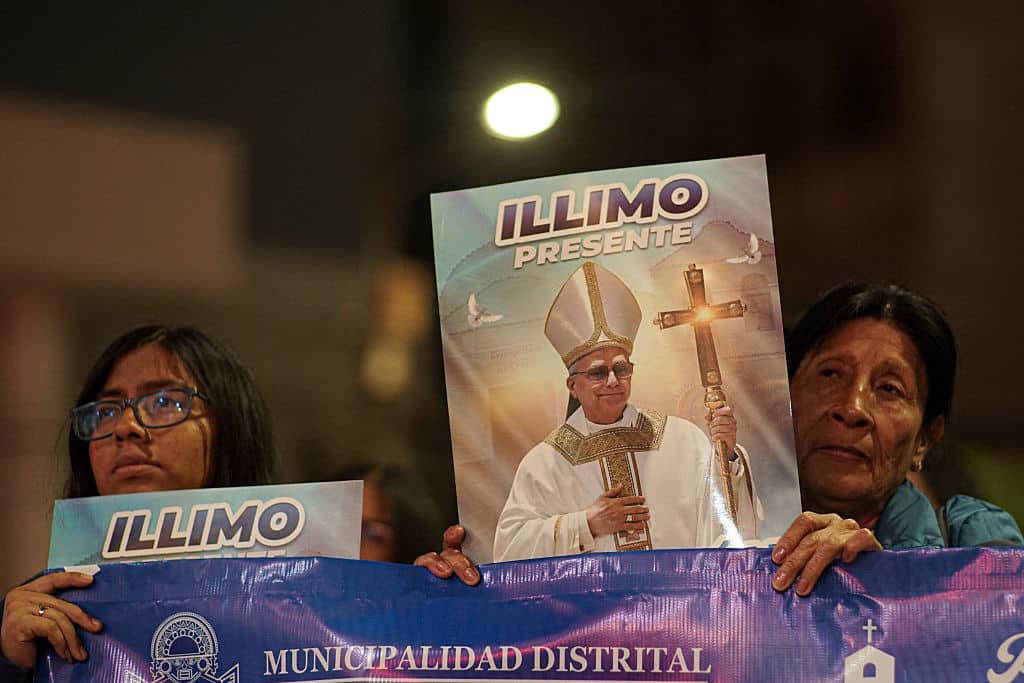A new survey released shortly after Pope Leo XIV’s election on 8 May shows the percentage of Catholics continues to decrease in Peru.
It was conducted by the Peruvian Studies Institute (known as IEP in Spanish), an independent social science think tank. In its previous research, carried out in November of 2024, IEP had shown that 63.5 per cent of the Peruvian people declared to be Catholic.
Six months later – coinciding with US-born Cardinal Robert Prevost, who also has Peruvian nationality following decades in the country, being elected as the new pontiff – the percentage of Catholics has fallen to 60.2 per cent.
In the same period, the proportion of Evangelicals grew from 8.4 per cent in 2024 to 11.3 per cent in 2025. The percentage of Peruvians who declared they don’t have any religion increased from 11.1 per cent in 2024 to 11.9 per cent in 2025.
Peruvians were also questioned about the feeling generated by the election of a pontiff with a significant connection to Peru. Most of them – 59 per cent – mentioned positive emotions regarding Prevost’s election, including joy (34.5 per cent), hope (9.6 per cent) and tranquility (6.3 per cent). Among Catholics, 74 per cent described their feelings as positive.
According to experts on the religious dynamics in Peru, the survey’s results were predictable, given that there’s a religious transition going on in the South American country and a single fact like Prevost’s election can’t impact the scenario to the point of interrupting the current trend – especially in such a short time.
While in Central American nations and in Brazil the proportion of Evangelicals has been growing fast since the 1980, in Andean countries like Peru, Catholicism had been keeping a strong and most immutable base until recently.
In 1996, the percentage of Evangelicals in Peru corresponded to only 4.4 per cent. Now, research has been showing that they make up about 20 per cent of the total Peruvian population. In IEP’s survey, the sum of Evangelicals and Christians from other churches corresponds to 23.9 per cent.
“Prevost’s election would not be reflected in a survey at this point. It may take several weeks to be assimilated. So, the past trends prevailed,” philosopher Cecilia Tovar, a member of the Bartolomé de las Casas Institute in Lima, told <em>Crux</em>.
Over the past decades, several mega churches have arrived in Peru, setting up strong infrastructure and being accompanied by numerous missionaries from abroad, Tovar explained.
“Enormous temples were built all over Lima. At the same time, that movement boosted the creation of hundreds and hundreds of small Evangelical churches in popular neighborhoods,” she said.
Besides the steady growth of Evangelicals, there has been an increase in the number of agnostics as well, emphasised theologian Veronique Lecaros, who is the chief of the Pontifical Catholic University’s Theology career.
“The youth, especially the university youth, have been distancing themselves from religion. Many of them are not atheist, but have been disappointed by religion,” Lecaros said.
A few scandals involving Catholic groups may have impacted the perception of Peruvians concerning the Church. On 14 April, for instance, the once powerful and influential Sodalitium Christianae Vitae (SCV), a Conservative Catholic group founded in Peru by Luis Fernando Figari in 1971, was finally dissolved by the Vatican, <a href="https://thecatholicherald.com/pope-meets-whistleblower-in-peruvian-church-group-abuse-scandal/"><mark style="background-color:rgba(0, 0, 0, 0)" class="has-inline-color has-vivid-cyan-blue-color">following decades of wrongdoings</mark></a>.
The association, which amassed significant wealth during more than five decades operating among the white elite in Peru, was seen in general as “a group of rich people” by the lower social segments, said Lecaros. She doesn’t consider that the SCV’s downfall has impacted the Catholic Church’s public image.
“The Church managed to keep a high approval rate – of over 60 per cent – among Peruvians, despite the SCV’s problems,” she said.
But the recent <a href="https://thecatholicherald.com/controversy-erupts-as-sanctioned-cardinal-attends-pre-conclave-meetings/"><mark style="background-color:rgba(0, 0, 0, 0)" class="has-inline-color has-vivid-cyan-blue-color">denunciation of Cardinal Juan Luis Cipriani</mark></a>, formerly the Archbishop of Lima (1999-2019), may have had some effect on Peru’s Catholicism, said Lecaros.
Known for his conservative stances, Cipriani has been a member of Opus Dei for decades. At the beginning of 2025, he was accused by the Spanish newspaper<em> El Pais</em> of having committed abuse in 1983 against a minor.
“It had a major press impact and may have impacted the public,” Lecaros said.
The major problem, however, has to do with the Church’s own insufficiency in dealing with the current challenges, Tovar analysed. In her opinion, the priests formed over the past few decades tend to be “clericalist” and to lack “a close pastoral approach to churchgoers".
“We had a marvelous generation of foreign missionaries who came in the 1960s and 1970s. They’re now too old. The young generations, in general, aren’t able to provide proper pastoral attention,” Tovar said.
At the same time, Evangelical pastors usually offer a much more personal spiritual experience.
“We’re transitioning from a social form of faith to a personal one. The Church is paying the price of that tendency,” she said.
<em>Photo: People participate in a vigil before a Holy Mass marking the beginning of the Pontificate of Pope Leo XIV in front of the Cathedral of Saint Mary, Chiclayo, Peru, 17 May 2025. (Photo by DIEGO TORRES/AFP via Getty Images.)</em>



